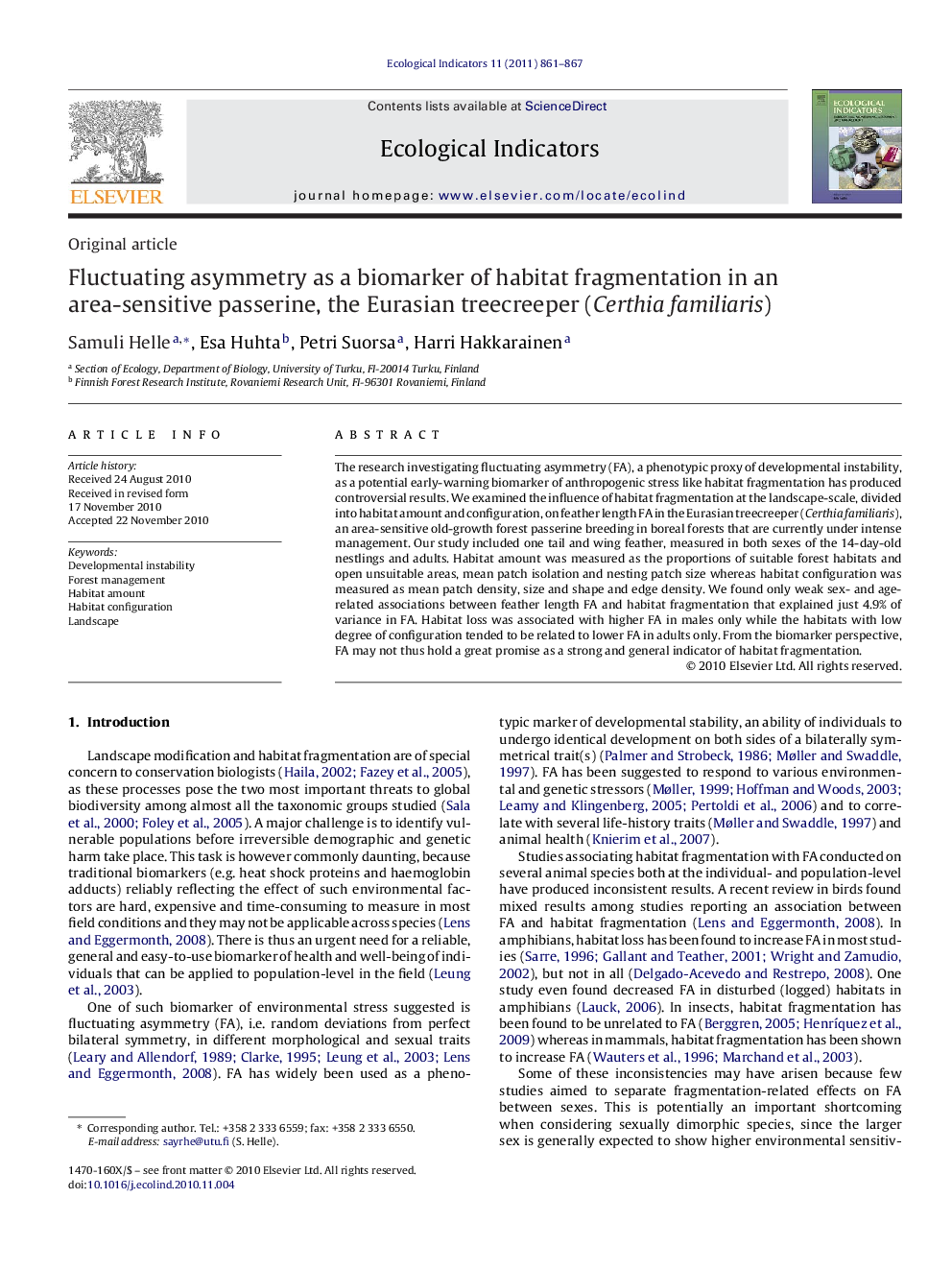| Article ID | Journal | Published Year | Pages | File Type |
|---|---|---|---|---|
| 6295687 | Ecological Indicators | 2011 | 7 Pages |
Abstract
The research investigating fluctuating asymmetry (FA), a phenotypic proxy of developmental instability, as a potential early-warning biomarker of anthropogenic stress like habitat fragmentation has produced controversial results. We examined the influence of habitat fragmentation at the landscape-scale, divided into habitat amount and configuration, on feather length FA in the Eurasian treecreeper (Certhia familiaris), an area-sensitive old-growth forest passerine breeding in boreal forests that are currently under intense management. Our study included one tail and wing feather, measured in both sexes of the 14-day-old nestlings and adults. Habitat amount was measured as the proportions of suitable forest habitats and open unsuitable areas, mean patch isolation and nesting patch size whereas habitat configuration was measured as mean patch density, size and shape and edge density. We found only weak sex- and age-related associations between feather length FA and habitat fragmentation that explained just 4.9% of variance in FA. Habitat loss was associated with higher FA in males only while the habitats with low degree of configuration tended to be related to lower FA in adults only. From the biomarker perspective, FA may not thus hold a great promise as a strong and general indicator of habitat fragmentation.
Related Topics
Life Sciences
Agricultural and Biological Sciences
Ecology, Evolution, Behavior and Systematics
Authors
Samuli Helle, Esa Huhta, Petri Suorsa, Harri Hakkarainen,
